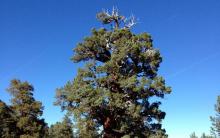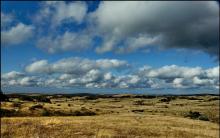Madagascar comet(lat. Argema mittrei), or Moon moth(eng. Moon moth) -
the largest butterfly on the planet, measured in length. From peacock eyes.
Saturnia madagascarensis - . This nocturnal beauty can only be seen in Madagascar. The longest butterfly in the world is also called the comet butterfly: because of its 14-centimeter forked “tail”. Like its close relatives from the peacock-eye family, Saturnia Madagascar is distinguished by a small retracted head (with double-combed antennae in the male), bright coloring and a thick body covered with fluffy hairs. On each wing, the size of a palm, there are large ocellated spots. Peacock-eyes are one of the largest butterflies in the world
The wingspan is up to 18 cm. The wings are decorated with unusually long spurs, sometimes reaching 20 cm.


Madagascar urania

Madagascar urania - Chrysiridia rhipheus - a diurnal butterfly from the urania family (Uraniidae). Considered one of the most beautiful butterflies in the world. The color of the butterfly is very bright, with iridescent parts on the wings that have no pigments; rather, the colors come from optical interference. An adult moth reaches 7-9 cm in wingspan.
Urania madagascarensis was discovered on the island of Madagascar as an endemic species. Adult moths appear first from March to August, and in smaller numbers from October to December. The female lays approximately 80 eggs on the underside of leaves of plants of the genus Omphalea. The caterpillar is pale yellow with black dots and red legs. After going through four stages of development, the caterpillar builds a cocoon of silk. The moth spends 17-23 days in the pupal stage. Urania Madagascar is a picky eater and feeds exclusively on four species of plants of the genus Omphalea. All plants of this genus are toxic, and the caterpillar feeds on these leaves and gains toxicity, which persists in all stages. In thousands of individuals, these moths migrate from east to west, and later back, for fresh, fresh nutritious vegetation.

Goliath Birdwing Butterfly
The homeland of the Goliath sailfish is New Guinea and the Moluccas. It lives in montane tropical forests at altitudes from 500 to 1500 m above sea level.
Females up to 21 cm in wingspan. Goliath is the second largest diurnal butterfly after Ornithoptera Alexandra.
However, the goliath holds another record - the eggs of this butterfly are the largest for lepidoptera and reach a diameter of 4.7 mm.
Goliath lays eggs on plants of the Kirkazonaceae family. Caterpillars develop rather slowly - sometimes more than two months.
More recently, a pair of this butterfly, due to its rarity, cost as much as a good car, but in recent years, after success in breeding this species on insectarium farms, its price has become quite affordable. Papuans, seeing the beauty of wings, often use them to make jewelry.
The male goliath birdwing is surprisingly bright. Its broad forewings sparkle yellow and green against the black velvet. The hind wings are almost entirely golden, as if glowing from within.




Peacock-eye Atlas, or Atlas (Attacus atlas)or PRINCE OF DARKNESS. - a butterfly from the Peacock-eye family. One of the largest butterflies in the world. The wingspan is up to 26 cm, females are noticeably larger than males. The largest documented female specimen was caught on the island of Java and had a wingspan of 262 mm. According to undocumented data, the largest specimen caught was a female with a wingspan of 289 mm. Found in tropical and subtropical forests of Southeast Asia, Southern China and from Thailand to Indonesia, Borneo, Java.



The silk moth Attacus atlas has a wingspan of 24 cm. (Let’s imagine that one of these butterflies landed on the screen of a computer monitor. After all, it will cover it almost entirely!)

A giant butterfly, its wingspan exceeds 250 mm; in terms of wing area, it is recognized as the largest butterfly in the world. The color of the wings combines various shades of velvety brown, red, pink, yellow and cream. On the elongated yellow-orange apex of the forewing there is a bright burgundy-red stripe that looks like a brushstroke. Large transparent eyes-windows have a shape close to triangular.
The bizarrely curved edge of the fore wing is similar in shape and color to a snake's head. This repels many insectivorous animals. The female is similar to the male in the pattern and color of her wings, but she is larger and more massive. Its double-combed antennae are shorter and narrower than those of the male.
The habitat of this peacock eye is from India, Indonesia and Malaysia to China.
Here she is, beauty:


Also among the largest diurnal butterflies is (lat. Papilio antimachus) from Central Africa. The wingspan of males can reach 25 cm. The Antimah swallowtail is the largest diurnal butterfly in Africa. The species is not numerous.

Females are similar in appearance to males, but are significantly smaller in size. Males sometimes gather in flocks in search of flowering bushes. They also drink water from puddles together. Females are never shown in open areas of the forest. The butterfly amazes not only with its size, but also with the amazing shape of its front wings: the incredibly elongated apex makes them look like the wings of a bird. The pattern and color of the wings vary greatly, with the main colors remaining various shades of brown and red-yellow. Besides people, the butterfly has very few enemies, because... it is extremely poisonous.
Females are much smaller than males. The female in the collection is a source of pride and a collector’s dream: it is extremely difficult to see, much less catch, since she very rarely leaves the treetops. It is no coincidence that the first female Antimachus swallowtail was discovered only a century after the description of the male (in 1782). The natives brought it to the participants of Lord Rothschild's entomological expedition.
This butterfly lives in tropical rainforests from the west coast of Sierra Leone to Uganda. Despite its extensive habitat, this species is not numerous. The butterfly is considered rare because it flies exclusively in virgin rain forests, which are in danger of extinction due to massive deforestation. Only three countries: Ghana, Ivory Coast and Zaire have taken measures to protect the antimach.
SATURNIA - PEACOCK-EYED HERCULES(lat. Coscinocera hercules) is the largest in Australia and New Guinea, and one of the largest moths in the world.


One of the largest butterflies in the world, and the largest butterfly in Australia, which is why it got its name "Hercules". The wingspan of females can reach 27 cm, and the wing area up to 263.2 cm2. The wings of females are wider than those of males, and males are also distinguished by unusually long spurs on their hind wings. Butterflies are active at night.
Distributed in Papua New Guinea and northern Australia.
The largest day butterfly in Russia - SAILING SHIP MAAKA(lat. Papilio maackii) with a wingspan of up to 13.5 cm. This butterfly is also called TAIL BEARER MAAKA or BLUE SWALLOWER. The specific name is given in honor of Richard Karlovich Maack, a Russian naturalist, explorer of Siberia and the Far East.


A significant part of the black forewing of the male shimmers with a green dotted coating, which, closer to the edge, thickens into a sparse emerald-blue border. The area free from green coating shines with magical black silk: it is covered with the finest and most delicate fragrant black hairs - androconia. The hind wings with a wavy edge and long tails shine with an iridescent blue-green pattern.
 The female is larger than the male, her wingspan reaches 135 mm, while that of the male is 125 mm. The green dotted coating evenly covers the entire dark brown forewing of the female. The pattern of its hind wings is the same as that of the male, but its shine is muted, and in the marginal wavy border, along with green-blue, red-violet shades also appear. Females are much more variable than males. Among them it is difficult to find two identical butterflies.
The female is larger than the male, her wingspan reaches 135 mm, while that of the male is 125 mm. The green dotted coating evenly covers the entire dark brown forewing of the female. The pattern of its hind wings is the same as that of the male, but its shine is muted, and in the marginal wavy border, along with green-blue, red-violet shades also appear. Females are much more variable than males. Among them it is difficult to find two identical butterflies.
This largest daytime butterfly in Russia surpasses many of its tropical relatives in its beauty. It’s hard to believe that the distribution area of this wonderful sailboat extends to 54° north latitude, where Tynda and northern Sakhalin are located. Every year, two generations of Maak tail-bearers appear: spring butterflies are medium-sized, light and bright, while summer butterflies are twice as large and darker. The Maaka tail-bearer lives in the Middle Amur region, Primorye, North Korea, Manchuria, and the Kuril Islands. In these places, butterflies are often found in broad-leaved and mixed forests, less often in spruce-fir forests. They also fly into taiga villages. During the period when subalpine plants bloom, butterflies rise into the mountains up to 2000 m above sea level: looking for food, they fly around treeless peaks in a circle.
And the largest nocturnal butterfly in Europe and Russia is (lat. Saturnia pyri), with a wingspan of up to 15 cm.


Butterfly size - 70 mm. The largest butterfly in Europe. In flight, it is often mistaken for a bat. Males and females are similar in color, but the antennae of the male are feathery. The hind wings are similar to the fore wings, but the background of the leading edge of the wing is light brown instead of gray. Butterflies don't feed. The pear-eye peacock-eye is similar in appearance to the common peacock-eye, but the latter is much smaller and the hind wings of the male are orange.
Distributed in southern Europe. Lives in light forests, gardens and open spaces.
|
|

|
|
|||||||||||













The most beautiful motorcycles in the world
Which sea is the cleanest in the world?
Top 10 Most Expensive Furs
The largest and most luxurious casinos in the world
Knightly orders of Europe XI - XIII centuries